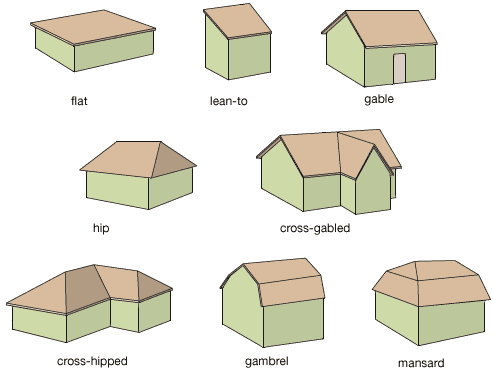Inspecting Your Roof
People should make a habit of taking a good look at their roof in the autumn before a long winter sets in. Unless you are having trouble with visible leakage, checking the roof a bit more often than once a year is advisable. Roofing material, like anything else, is subject to wear and tear and is your first line of defense from the elements. Because Louisville KY has many different weather patterns, it is a good idea to know what to look for, and what to expect when it comes to caring for your roof. A neglected roof can cost you way much more than what it normally would regarding damaged roof boards, studs, and even interior ceilings and walls. Here, we will look at how to inspect your roof, a little about types of roofing materials, and how to assess the damage.
What To Look For
Just going up on the roof and looking around isn’t enough. You will need to look for specific things. Let’s see what it needs:
Check flashings on the roof. Flashings are the metal pieces in a roof that cover interruptions in the roofs pitch, such as around dormers, chimneys, and vent pipes. If it appears there is damage, fix these problems right away, or call a roofing contractor and have them fix problems. Inadequate or faulty flashing will allow snow meltage to enter the interior, causing not only infrastructure rot but possible damage to interior walls.
Asphalt roofing materials have a rough surface, much like fine gravel. As the asphalt ages, it becomes brittle, and these granules will come out over time. If you see a lot of these granules in gutters, chances are the roof is aging. Look for bare spots in asphalt shingles, and inspect closely for signs of tearing or warpage. If you notice shingles curling up, it is time for a replacement.
If your roof has wooden shake or shingles, look for signs of dry rot or warpage depending on the climate of your locale. Know the difference between wooden shakes and shingles – shakes are hand-split on at least one face and either tapered or straight.
Shingles are sawn and tapered. If an inspection reveals that approximately one-third of the shingles or shakes has any sign of the above damages, it is time to replace the roof. Never walk on a wooden shake or shingle roof when inspecting.
A metal roof has a design life of 50 years if maintained and properly painted. Metal roofing comes in galvanized iron or steel, aluminum, copper, and even lead in older homes. Each has its wear characteristics. Look for signs of pitting, rusting and corrosion that can be the natural results of aging
. Look for loose or open seams and joints that can lead to leaking.
Slate, clay tile, and asbestos cement shingles are high end, but will last the lifetime of the home if cared for properly. They are subject to ice damage in extreme climates. Because they are so brittle and easily broken, the best way to inspect them is by using binoculars to get a close look at their condition. Check for broken, chipped or missing pieces.
If you are not capable of climbing to high spaces, call a trusted roofing contractor to do the inspection for you. Many of them will do so free of charge, in hopes of getting your business. Many roofing contractors can be scheduled on a bi-yearly basis to come and inspect your roof. In any case, you can check a roof quite well using binoculars. Always inspect under eaves and overhangs to look for damage that might indicate water leakage, especially at points of the roof that don’t conform to the flat roof plane, such as dormers or skylights. Taking the time to do a thorough inspection on a regular basis will save you a lot of money in the long run.
What Kind Of Roof Do I Have
